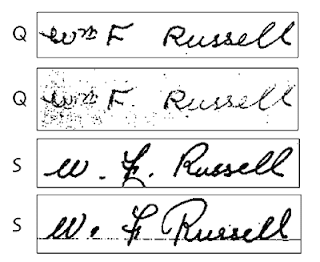What are Fingerprints?
Everybody, well almost everybody, has fingerprints. Fingerprints are the very small ridges found on the tip of your finger. Each person has a unique set of fingerprints; even identical twins do not have the same fingerprints.
The ridges that make fingerprints are called
friction ridges. They contain pores that transfer sweat from your fingers to everything you touch. These ridges form patterns called
loops,
whorls, and
arches.
Loops begin on one side of the finger and curve around or upward, and exit off the other side. Two types of loops are
radial loops, which slope toward the thumb, and
ulnar loops, which slope toward the little finger.
Whorls form a circular or spiral pattern.
Arches slope up and then down.
Each of a persons ten fingers may contain a different pattern of ridges than the finger next to it. For example, the index finger may have a whorl pattern and the middle finger may have a loop pattern of ridges.
Fingerprints may have unusual features such as scars in them.


Some animals have very human looking fingerprints. One of these is the Koala from
Australia. You can see from the comparison below that the Koala fingerprint on
the left looks very similar to the human fingerprint on the right.
History of Fingerprint Analysis
Fingerprints are obviously nothing new, but it is interesting that pre-historic picture writing found in Nova Scotia, Canada, show a hand with patterns of ridges on it, meaning that humans were noticing the ridges and patterns even in pre-historic times.
Both ancient Babylonians, with clay impressions, and the Chinese, with ink on paper and clay seal impressions, used fingerprints for important record keeping such as recording business transactions. In 14th century Persia, officials used fingerprints on government documents.
Fingerprints weren't used for identifying individuals until the mid-19th century, around 1858, when Sir William Herschel, an Englishman, was working in India and began having the residents place their hand prints and later the fingerprints of the right index and middle fingers on documents in order to prove their identities.
In the late 19th century, around the 1870's, Dr. Henry Faulds found it interesting that ancient Japanese artisans had left their fingerprints in clay. He not only figured out that fingerprints could be used for identification purposes, he devised a system to do so.
The first known use of fingerprints as tools for identification in the United States was by Gilbert Thompson in 1882. Mr. Thompson, an employee of the U.S. Geological Survey in New Mexico, used his fingerprints on a document as a tool to prevent forgery.
Also during the 1880's, Sir Francis Galton, a British anthropologist, created a classification system for using fingerprints as a means of identification. He identified the characteristics used to identify fingerprints. These characteristics are called "minutia" and are often referred to as Galton's Details.
In 1901, Sir Edward Richard Henry revised Galton's observations and created the Henry Classification System. This was the point at which England and Wales began using fingerprints for criminal identification.
The New York Civil Service Commission began using fingerprints as identification tools for applicants taking the civil service tests in 1902 and Dr. Henry P DeForrest became a pioneer in fingerprinting in the United States. DeForrest recommended the use of fingerprinting to the New York Civil Service Commission and so established the first fingerprint file in the U.S., as well as began the use of fingerprints by U.S. government agencies.
In 1903, the New York State Prison system began using fingerprints in the first systematic use of fingerprints to identify criminals.
The Fingerprinting Process

The technique of fingerprinting is known as
dactyloscopy. It was originally done using ink and a card.
There are two types of fingerprint impressions,
rolled and
plain (flat).
The rolled impression was created by rolling the fingertip in ink and then rolling it onto a prepared card from one side of the fingernail to the other. Plain, or flat, impressions are created by placing all fingers of each hand (inked) down on the bottom of the card. The flat impressions are used to verify the rolled impressions.
Fingerprints found at the scene of a crime can be analyzed by law enforcement once they are collected. The two types of prints found at crime scenes are
visible prints and
latent prints.
Visible prints are made on a surface that creates an impression, such as blood, dirt, or clay.
 Latent prints
Latent prints are created when sweat and oil on the skin leave a fingerprint on a surface that the criminal has touched. Since the prints are not easily seen with the naked eye, they can be made visible using dark powder, lasers, and other light sources. These fingerprints can be "lifted" with tape or take special photographs of them.
The fingerprint on the left is a latent print made on a light colored surface.
Technological advances such as digital scanners enable law enforcement to quickly capture an image of the fingerprint. A digital reader converts the information from the scan into digital data patterns and then maps various points on the fingerprints to search for similar patterns in a database.
The first Automated Fingerprint Identification System (AFIS) was created in Japan in the 1980's. In 1999, Integrated AFIS was introduced, which enabled computers to categorize, search, and retrieve fingerprints from virtually anywhere in the country within 30 minutes.
The art of Fingerprint Analysis has revolutionize law enforcement all over the world.



















